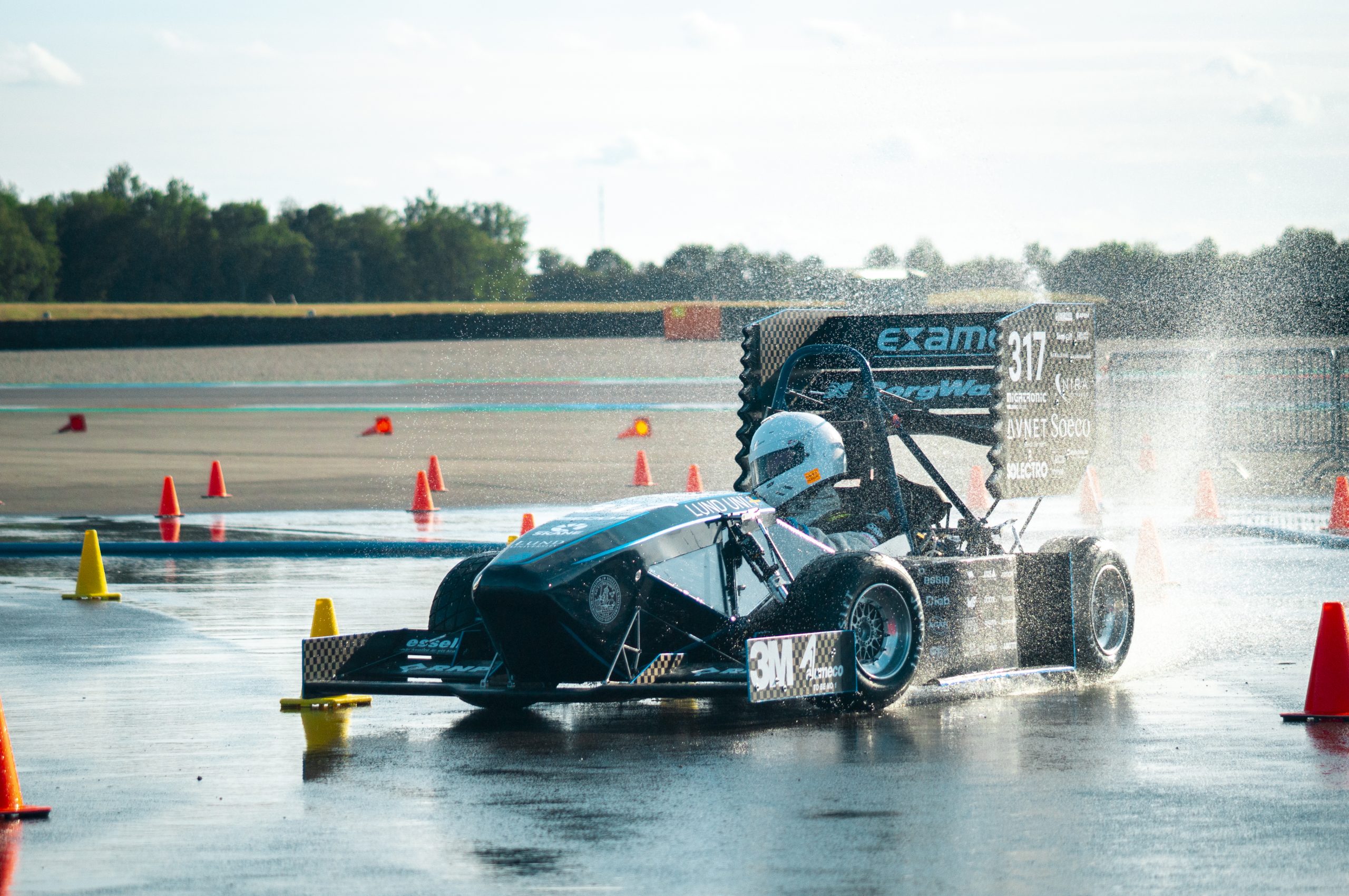WHAT IS FORMULA STUDENT?
Formula Student is a global engineering competition. The challenge is to develop and build a small open wheel race car in a single school year. There are over 600 universities represented in the three vehicle classes: combustion, electric, and driverless. The purpose of the competition is to give students practical experience with working in large engineering projects, preparing them for post-university work. Formula Student alumni are highly sought after by the engineering industry because of this.


Although most of the participating teams are concentrated in Europe, Formula Student is a global competition. North and South America, Asia and Oceania are the main other regions. Due to the logistical difficulties of travelling around the world with a race car, we are mainly taking part in the European competitions nowadays.
THE CARS
The design restrictions of the cars are relatively few, but since Formula Student is not a classic 20-car grand prix and instead focus on engineering and efficiency, the cars reflect that.
Formula Student spec cars are small, single-seated open wheel cars with a four stroke engine. Most teams incorporate an aerodynamics package, budget and competence allowing.
The cars are made to be as lightweight as possible, with emphasis on downforce and manueverability above raw power. This is due to the fact that since the tracks are tightly designed, the cars never reach high enough speeds to warrant more power. Therefore, the aforementioned qualities are valued higher. Read on down below if you wish to learn more about the competitions!

COMPETITION
A Formula Student competition is divided up into 8 different events, all testing the teams and their cars in different ways. Teams are scored individually for each event, and the total sum determines the overall winner.
ENGINEERING DESIGN
The team presents the car to several judges who question individual team members on the development process of specific systems. The better answers you can give them, the more points you score.
COST & MANUFACTURING
Similar to the Engineering Design event, but with the team members being questioned on the manufacturing process of specific systems. If you can convince the judges that your system is manufactured in the most efficient way, you will score many points.
BUSINESS PLAN PRESENTATION
This event is set up like an investment meeting, where the team has to pitch a creative way to monetize their car to a group of judges. Scoring is based on financial understanding, novelty of the idea, and quality of the presentation.
ACCELERATION
Cars race in a straight line from a standing start on a 75 meter long track, the shortest time wins.
SKIDPAD
The static cornering ability of the cars are tested by having them race in a figure 8 circuit. Whoever can complete two right hand laps and two left hand laps in the shortest time wins.
AUTOCROSS
A hot lap around a tight and winding circuit about a kilometer in length. Your lap time not only decides the amount of points you get, but also the starting order for the Endurance event.
ENDURANCE
Several laps around the autocross track for a total distance of 20 km, with a driver change halfway through. There are several cars on track at once, cars passing each other is handled by signaling with blue flags. The fastest time scores the most points.
EFFICIENCY
Energy consumption is measured before and after the endurance event and is scored. The time you finished the event is also taken into account.
Scoring




